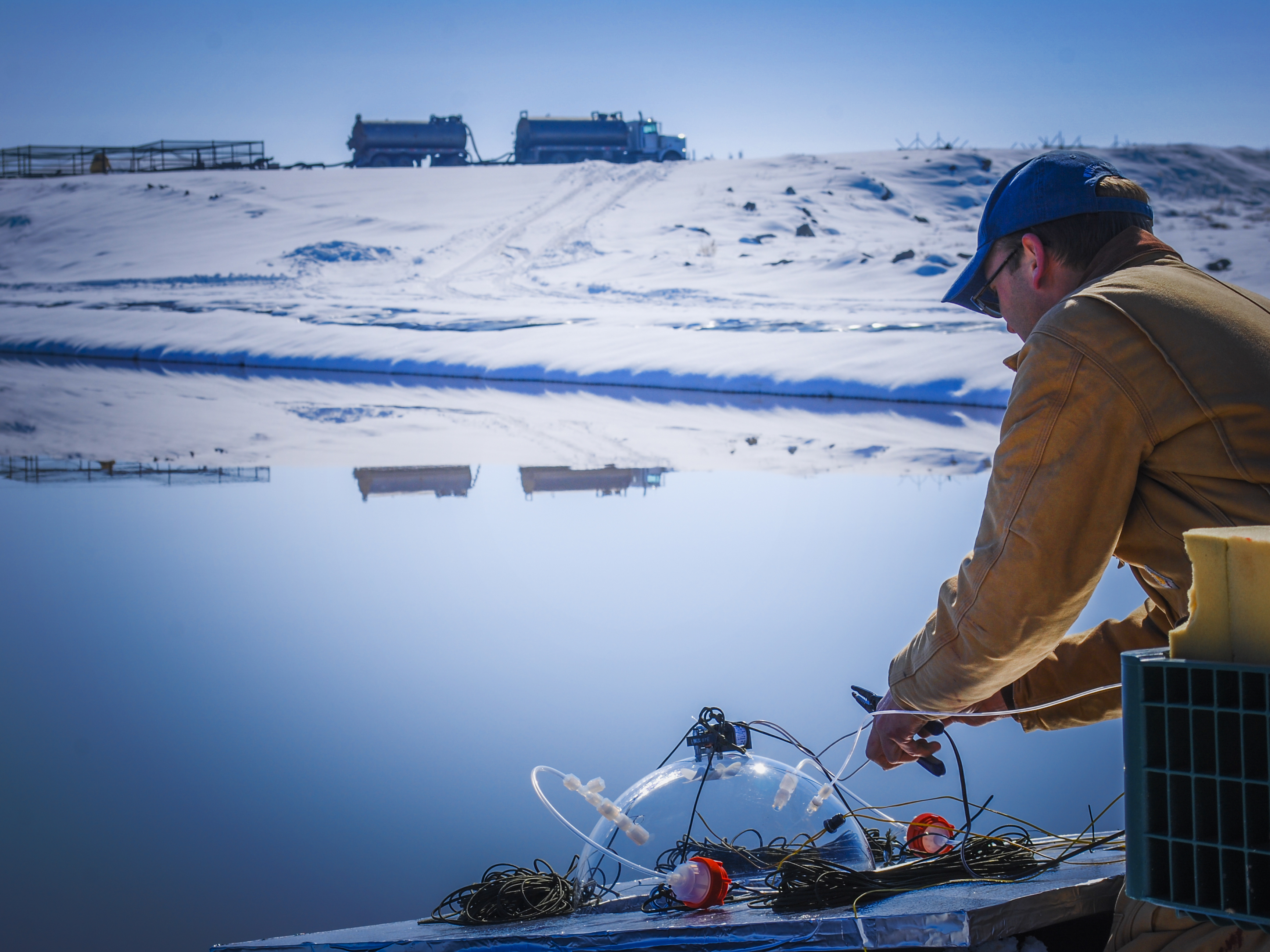Produced Water
 In addition to petroleum products, oil and gas well sites produce large volumes of water. This produced water is a waste product that is treated via one of three methods: injection back into the subsurface, evaporation from ponds, or treatment followed by reuse or discharge. Frequently, even water that is to be injected or treated spends time in a pond since this allows companies to handle fluctuations in incoming water volume. Estimates are available for most sources of emissions throughout the oil and gas production process, but very few measurements of emissions from produced water ponds have been made until now.
In addition to petroleum products, oil and gas well sites produce large volumes of water. This produced water is a waste product that is treated via one of three methods: injection back into the subsurface, evaporation from ponds, or treatment followed by reuse or discharge. Frequently, even water that is to be injected or treated spends time in a pond since this allows companies to handle fluctuations in incoming water volume. Estimates are available for most sources of emissions throughout the oil and gas production process, but very few measurements of emissions from produced water ponds have been made until now.
We utilize a modified version of the EPA emission isolation flux chamber to measure emissions from produced water ponds. These samples (along with meteorological conditions and other parameters) allow us to characterize these source emissions for methane, carbon dioxide, non-methane hydrocarbons, and light alcohols. Flux chambers provide precise results in any topographical or meteorological conditions, but they can suffer from biases. We are also estimating emissions using plume characterization/inverse modeling techniques and comparing measurements made with the two methods.
Our work to characterize emissions from produced water ponds has been funded by the Research Partnership to Secure Energy for America, the U.S. Department of Energy, the Uintah Impact Mitigation Special Service District, and the Utah School and Institutional Trust Lands Administration.
Links and Downloads
- Article featured on the cover of the Journal of Petroleum Technology.
- The Utah Geological Survey study of produced water management options for the Uinta Basin
- Download a text file that contains the location of Uintah Basin produced water ponds
- Download our final report to RPSEA and DOE
- Access a related paper about emissions from landfarms
- Download reports about our report to characterize emissions from produced water ponds in Wyoming
- Download a calculator that estimates Uintah Basin pond emissions
- Download our anonymized produced water emissions datasets

